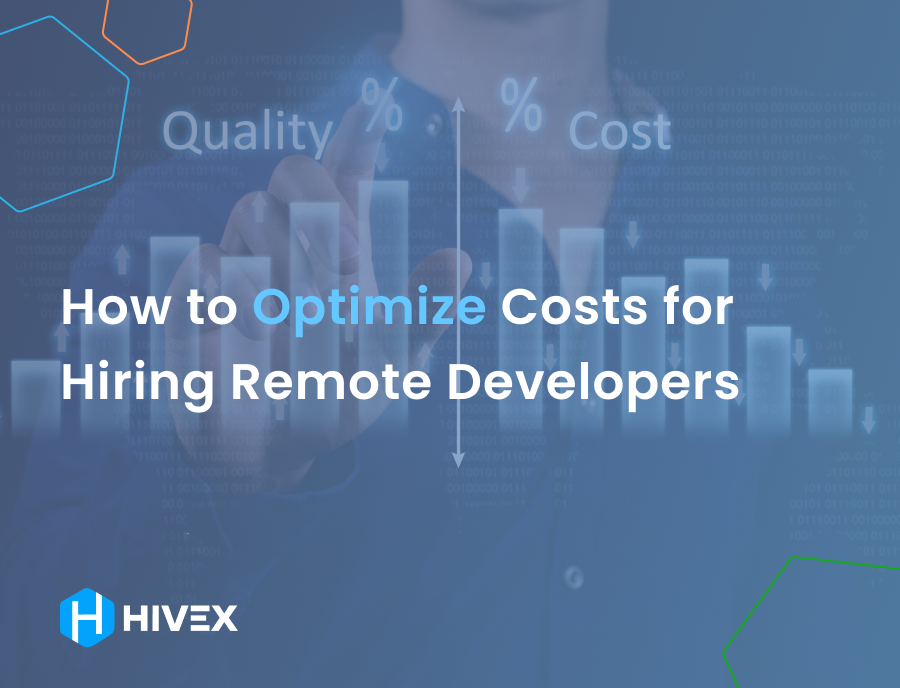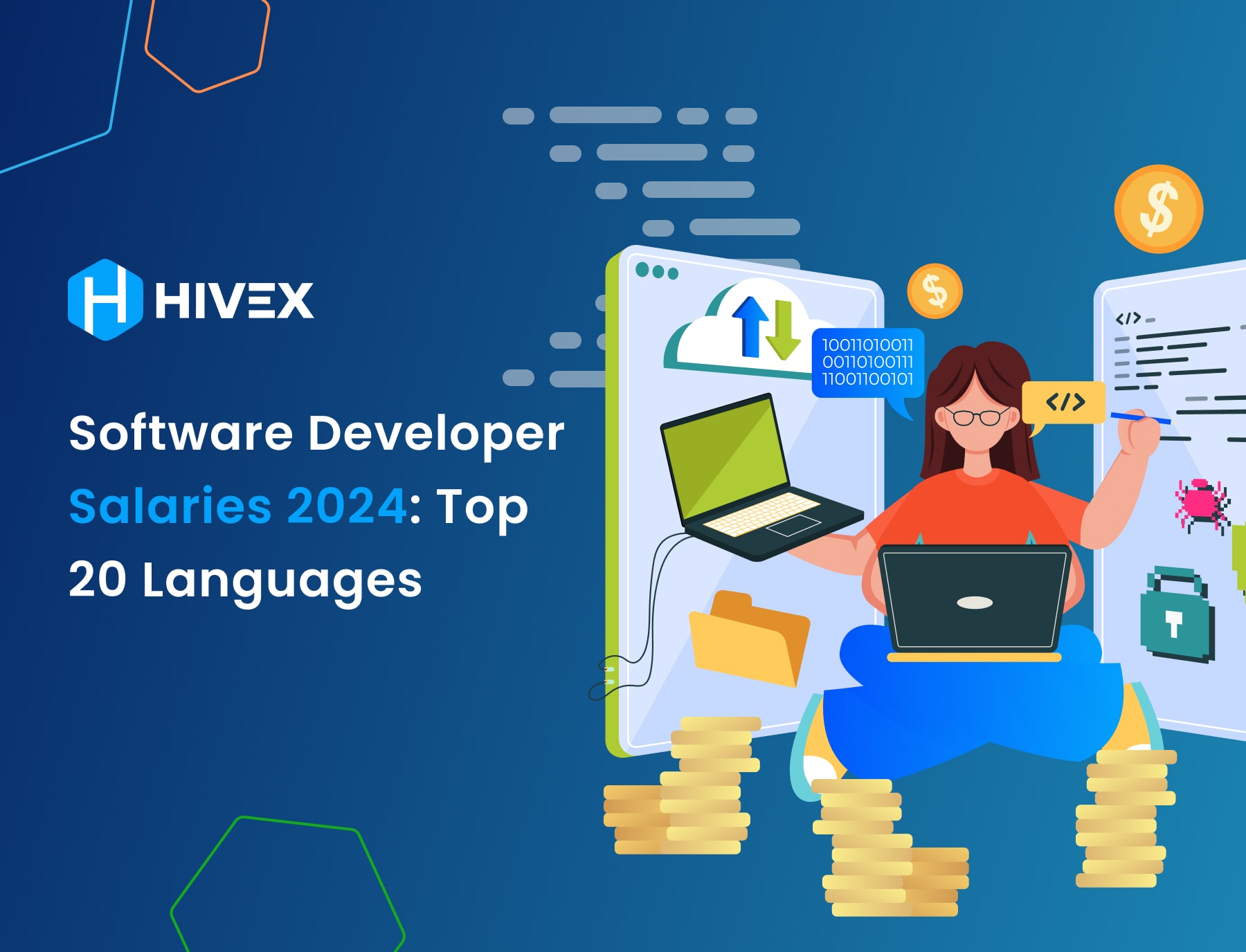How to Optimize Costs for Hiring Remote Developers

Hiring skilled remote developers is essential for software companies looking to scale up and expand their teams. However, finding and onboarding new technical talent comes with significant costs. Understanding your cost-per-hire metric can empower you to make strategic decisions when building out your engineering staff.
In this comprehensive guide, we’ll break down what cost per hire means, how to calculate it, and provide actionable tips to optimize your hiring budget. Whether you’re a startup aiming to be scrappy or an enterprise company wanting to streamline recruiting, these insights will help you hire top developers at the best possible price.
Defining Cost Per Hire

Cost per hire refers to the total costs involved with recruiting, hiring, onboarding, and training one new employee. This metric allows you to analyze how much your company invests to bring one developer onto your development team.
For engineering managers and recruiters, cost per hire is a vital number to track. It directly impacts your budget, headcount, and broader company strategy. Being intentional about your cost per hire can maximize hiring ROI and prevent you from overspending on the wrong candidates.
Why Cost Per Hire Matters

Understanding your cost per hire provides clarity on where your budget is going and how to adjust your hiring practices. Here are some of the key benefits of calculating this metric:
- Budgeting accuracy. With an estimated cost per hire, you can better forecast spending when adding headcount. This allows you to build a realistic hiring plan aligned with business growth.
- Comparison over time. Looking at how cost per hire changes year over year shows if your process is improving or becoming less efficient. You can identify pain points.
- Industry benchmarking. Knowing the average cost per technical hire in your market lets you evaluate what is competitive compensation and where you can optimize.
- Scaling decisions. Calculated cost per hire helps you thoughtfully scale your hiring as the business expands. You can model how additional headcount will impact your bottom line.
- Recruiting optimization. If your cost per hire exceeds benchmarks, it signals areas in your recruiting process that can be enhanced or automated to reduce spending.
For these reasons, seriously tracking cost per hire separates strategic data-driven companies from those making hiring decisions on a whim. Doing this analysis provides visibility into the intersection of engineering productivity, team growth, and finances.
How to Calculate Your Cost Per Hire

Figuring out your specific cost per hire takes a bit of math. Here are the key components that go into the calculation:
Total Costs
This includes any expenses tied to talent acquisition for the defined period. Main categories:
- Internal recruiting costs: Recruiter salaries, sourcing tools, job marketing materials, onboarding programs
- External recruiting costs: Staffing agency fees, job board postings, advertising campaigns
- Hiring manager costs: Time spent interviewing, and assessing candidates
Number of Hires
The tally of how many new engineers joined the company in the time frame you are measuring.
Formula Cost Per Hire = Total Hiring Costs / Number of Hires
To illustrate, here is a sample cost-per-hire scenario for 6 months:
- Internal recruiting costs: $18,000
- External recruiting costs: $12,000
- Hiring manager costs: $5,000
- Number of engineering hires: 10
Calculation: ($18,000 + $12,000 + $5,000) / 10 hires = $3,500 cost per hire remote developers.
This shows a $3,500 investment was required to hire each of those 10 new software developers alone.
Recruiting Costs By Development Role
Cost per hire can vary significantly depending on the type of engineering role you are hiring for.
Here are typical cost ranges:
Entry-Level Developer
- Lower salaries make hiring more affordable
- $3,000 – $5,000 per hire range
- Draw from college pipelines and apprenticeship programs
Software Engineer
- Broadest talent pool with reasonable pay expectations
- $4,000 – $7,000 per hire range
- Hire at volume for the core engineering team
Senior Developer
- Demand higher compensation but onboard quicker
- $6,000 – $12,000 per hire range
- Source selectively for key leadership roles
Expert Contributor
- Niche talent who expect premium pay and perks
- $8,000 – $15,000 per hire range
- Pursue strategically since supply is limited
Accounting for these variations in your model provides better precision on costs as your team grows and takes shape. The composition of roles you need influences how much you’ll invest per hire.
Tracking the True Costs
The main pitfall in determining cost per hire is underestimating the full costs tied to talent acquisition. Beyond obvious recruiting expenses, many overhead costs should be factored in as well.
Here are some major cost centers to include in your calculation:
- Recruiter salaries and benefits
- Hiring manager salaries
- HR coordinator salaries
- Applicant tracking systems/recruiting software
- Background checks
- Job board and platform fees
- Agency finder’s fees
- Advertising and marketing spend
- Travel costs for interviews
- Sign-on bonuses or special incentives
- Laptops, equipment, and tools for new hires
- Onboarding and training programs
While individual expenses may seem minor, together they represent the full investment made to acquire engineering talent. Tracking this comprehensively year over a year provides complete visibility into your hiring machine.
Evaluating Your Cost Per Hire
Once you’ve crunched the numbers on your company’s cost per technical hire, how do you know if it falls within a healthy range?
Benchmark
Here are two productive ways to contextualize your metric:
Compare Over Time
Looking at how your cost-per-hire changes provides insight into the efficiency of your recruiting operations. Growing costs may signal bloated spending. Declining costs may indicate positive optimizations but also potential quality issues.
Ideally, you want to see a consistent or moderately declining cost-per-hire trend:
- 2019: $8,000
- 2020: $7,500
- 2021: $7,000
- 2022: $6,500
Sudden spikes in the cost of hiring should be investigated. For example, a jump from $3,500 to $8,000 in one year indicates recruiting got considerably more expensive. This may be from an expansion into a new geography, but it warrants a closer review.
Against Industry Averages
Compare your metric to available industry data on cost per technical hire:
- Average cost per hire across all US companies: $4,425
- Average cost per hire for software engineering: $5,800
- Average Bay Area engineering cost per hire: $8,650
If your costs significantly exceed the norm, that’s a flag. For example, a $15,000 cost per hire for a standard software developer role would be concerning and call for evaluations into why your recruiting is abnormally expensive.
Optimizing Your Cost Per Hire

The goal isn’t necessarily to make hiring as cheap as possible. But when armed with your cost-per-hire data, there are opportunities to refine processes for a more balanced ROI.
Here are five areas to focus optimization efforts:
Streamline Screening
Adding automated screening tools early in the process of hiring developers can reduce time spent manually phone screening less qualified applicants. Define key technical and soft skills to filter candidates before they reach your staff.
Refine Interviews
Conduct targeted competency-based interviews focusing on must-have aptitudes. Develop a structured interview guide for consistency across candidates. Train hiring managers to ask insightful questions while avoiding irrelevant ones.
Guide Candidate Experience
A major hidden cost in recruiting is candidate experience. Negative experiences from a disjointed process or lack of communication can hurt your employer’s brand. This leads candidates to warn others away from applying.
Ensure a streamlined, personalized process including:
- Quick response times to applications and candidate questions
- Clear explanations of where they stand and the next steps
- Warm, casual tone in communications
- Interview tips and prep guides
- Giving closure even on rejections
This candidate TLC pays dividends through referrals and reputation, saving on future recruitment marketing.
Leverage Talent Networks
Maintain ongoing connections with past applicants, university pipelines, freelancers, referral networks, and underrepresented communities. Proactively source from here to get applicants faster.
Incentivize Referrals
Employee referrals are a top source of quality hires. Offer creative rewards to incentivize referrals from your team. Consider referral bonuses, gift cards, credits, or swag.
Done right, these initiatives can significantly control costs while improving results. Even marginal per-hire savings add up substantially throughout high-volume recruiting.
Leveraging Applicant Tracking Systems

A major way to gain recruiting efficiency is by implementing an applicant tracking system (ATS). Key benefits of an ATS include:
- Automated screening questions to filter candidates
- Organized dashboard to track requisitions and pipeline
- Database of resumes searchable by skills/experience
- Scheduling tools for interviews and assessments
- Analytics on hiring funnel performance
With these features, an ATS can shave significant time off the hiring process while improving quality. The right, technology stack is not cheap, but the long-term savings far outweigh the investment.
When evaluating options, look for an intuitive interface, robust reporting, configurability, and integration with your other HR platforms. The success of your ATS app project depends on adoption across your recruiting team.
A strategic hire will manage the implementation and train staff on the new workflows. This achieves maximum recurring savings that make the project cost-neutral quickly.
Risks of a High-Cost Per Hire Remote Developers

Why else should you keep your cost per hire in check beyond just tightly managing budgets?
Here are two major risks that arise from overspending in talent acquisition:
- Hiring fewer people. Excessive costs will limit hiring to only critical needs. This can stall growth plans and prevent adequately replacing attrition.
- Accepting subpar talent. There will be pressure to justify high costs by sticking with questionable candidates. Lowering the bar can hurt team quality.
Balancing cost per hire not only protects your finances but also ensures you build teams sustainably. The goal is to curate an engineering staff of top-tier talent within budget constraints.
Cost Impact of a Bad Hire
One hire gone wrong can be detrimental beyond just the sunk recruiting investment. The productivity loss and opportunity cost amplify the damage. Let’s examine the potential cost impact:
- $5,000 spent on hiring and onboarding
- $15,000 paid in compensation over 3 months
- $10,000 of lost productivity (work not done or rework needed)
Total cost = $30,000+
And this does not account for the negative effects on team morale, culture, and delivering against goals. All reasons to avoid a bad match from the start.
How Cost Per Hire Changes with Company Growth
As your business scales, your cost-per-hire needs also evolve. Here are some common shifts:
Early Stage
- Cost per hire is critical to minimize. Often DIY recruiting using networks.
- $2,000-$5,000 per hire range.
- Focus on core competencies needed now at low investment.
Growth Stage
- More structure and budget around recruiting team and branding.
- $4,000-$12,000 per hire range.
- Emphasis on quality and speed to grab talent before competitors.
Mature Company
- Heavily resourced talent acquisition team and strategies.
- $8,000-$15,000 per hire range.
- Focus on global hiring, niche senior roles, and volume hiring.
The ranges are broad but illustrate how cost considerations change with the maturity development skills and needs of your engineering organization. Know where you are on the spectrum.
Should You Outsource Recruiting?

One decision that impacts the cost per hire is whether to handle talent acquisition in-house or outsource it to an agency.
What are the differences?
In-house Recruiting
Pros:
- The internal team knows your needs and culture intimately
- Recruiters can build deeper talent pipelines
- Cohesive employer brand message
Cons:
- Requires significant HR overhead for a team
- Recruiting tool costs multiplied by headcount
- Inevitable peaks and valleys in workload
Outsourced Recruiting
Pros:
- Only pay for actual hires made so costs scale up/down
- Specialized recruiters with niche markets
- Speed and infrastructure of an agency
Cons:
- Less customization and touch on culture
- Potentially less invested in long-term fits
- Agency fees on top of HR budgets
Generally, early-stage companies want in-house recruiters to embed cultural DNA. Enterprises often leverage agencies to enable rapid, high-volume hiring.
The choice impacts not only cost per hire but also hiring quality, so factor both in when deciding what works best for your needs.
Remote Hiring Considerations
The rise of remote work opens up access to talent across geographies. But it also introduces some unique costs to factor:
- Virtual interviewing tools and services
- Assessments tailored to remote competencies
- Allowances for internet access, co-working spaces, etc.
- Cross-border employment costs and complexities
- Onboarding programs tailored to distributed teams
- Expanded equipment budgets
While expanding your talent pool, keep these in mind when estimating the cost per remote hire. The flexibility of hiring remotely, also allows you to tap affordable talent markets to control costs.
Cost-Saving Hiring Models
Some roles allow alternative hiring models that control costs:
Part-time Hiring
Bring on engineers at 30 hours a week. This allows access to parents, semi-retirees, and others seeking flexibility who may accept lower pay.
Contract-to-Hire
Initially engage technical talent on fixed-term contracts before making full-time offers. Reduces risk of mis-hire.
Gig Work Marketplaces
Tap into on-demand freelance talent for project work through sites like Toptal and Catalant. Pay only for the time you need.
Proven Ways to Bring Down Costs
While balancing quality, here are a few tactical ways to reduce cost per hire specifically:
- Have defined process steps and guidelines
- Institute stricter approval criteria for job requisitions
- Reduce agency dependency and fees where possible
- Handle more candidate sourcing digitally vs. manual outreach
- Limit unnecessary interviews beyond core assessments
- Give written tests before deep technical interviews
- Standardize questions and ratings across candidates
- Build retention so fewer new hires are needed
Even small optimizations like these quickly compound hiring savings at scale. But be wary of extremes that compromise hiring quality and productivity. The end goal is stellar talent at a sustainable, cost-effective amount, not just cost reduction alone.
Prioritizing Diversity Hiring Remote Developers
Building a diverse engineering team brings in a wider range of perspectives. However, it often requires additional investment to attract and include underrepresented groups.
Be mindful of these costs:
- Partnerships with diversity networks and nonprofits
- Sponsorship of belonging-focused events and conferences
- Mentorship and community-building programming
- Extended networking and relationship-building
- Thoughtful assessment design to reduce bias
- Premium to attract talent in low-diversity markets
View this as a long-term investment that pays dividends through innovation. Set realistic cost-per-hire expectations for hiring remote employees, and get executive buy-in on the value.
Setting a Cost Per Hire Goal
As you forecast headcount growth, establish a clear goal for cost per engineering hire to guide budgeting. This forces your team to think through project requirements in an ideal scenario, not just what currently exists.
Follow this process:
- Research industry benchmarks for your market.
- Look at current costs and where efficiencies may exist.
- Discuss resourcing needed to scale processes.
- Factor in strategic priorities like hiring speed or niche roles.
- Define a target cost per hire to work towards.
Revisit this exercise annually to reset an ambitious but realistic benchmark as your needs evolve. The cost-per-hire goal provides a North Star for recruiting teams to align efforts against.
Make Data-Driven Decisions
Leverage analytics throughout your recruiting process to base decisions on insights rather than assumptions. Capture key metrics like:
- Source of hire
- Days to fill openings
- Cost per submission
- Offer acceptance rates
- Onboarding satisfaction
- Turnover rate
Analyzing this data will reveal what channels, processes, and strategies return the best results. Continual improvement becomes systematic, not guesswork.
Key Takeaways

- Know your cost per hire to understand hiring investments and outcomes.
- Track comprehensive costs like technology, travel, training, and management time.
- Compare to previous years and industry benchmarks to identify gaps.
- Prioritize optimizing processes through automation, streamlining, and leveraging networks.
- Balance cost reduction with hiring quality so productivity does not suffer.
- Set an annual cost-per-hire goal based on growth plans and strategic priorities.
Carefully managing your cost per hire provides the insight needed to scale your software engineering team. With a sharp focus on this key metric, you can take charge of budgets and build a world-class technical staff. The result will be quality growth that propels your business forward.


